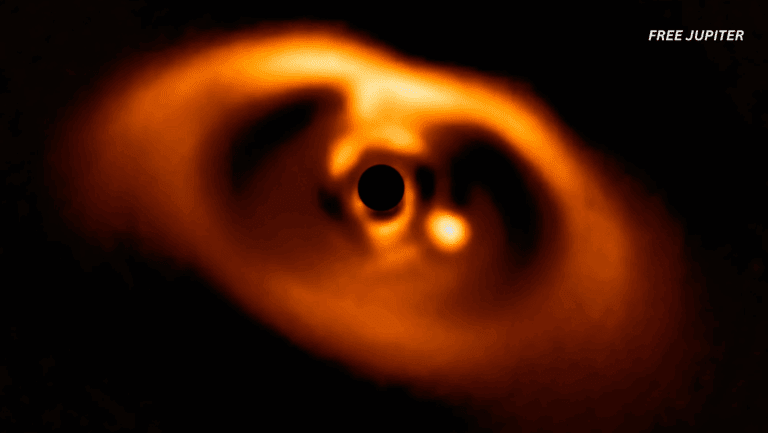For centuries, humans gazed at the stars with curiosity, occasionally wondering whether our little blue planet might be just one of many homes in the cosmos. But it wasn’t until the late 20th century that science began confirming those suspicions with evidence rather than speculation. The turning point came not from fortune-telling or fanciful theories, but from tireless observation, precise instruments, and a little planet now famous among astronomers: 51 Pegasi b.
This chunky gas giant kicked off an astronomical revolution, a broader reassessment of how common planets might be, especially those that could harbor life. If you’re wondering how one oddly located Jupiter-like world could send ripples through science, buckle in. This is a story of doubt, data, and daring dreams about other worlds.
A Planet Hiding in Plain Sight
The year was 1995, and the astronomical community was about to have its socks knocked off.
Using a then-cutting-edge device known as Élodie, Swiss astronomers Michel Mayor and Didier Queloz were analyzing a specific star that resembled our own Sun. What they were looking for were subtle wobbles, tiny shifts in the star’s position that might suggest the gravitational tug of an orbiting companion. In this case, that companion turned out to be something revolutionary: a planet outside our solar system.
The new find, dubbed 51 Pegasi b, wasn’t just any planet, it was a “hot Jupiter,” a term now used for massive gas giants that orbit precariously close to their stars. The orbital period was shocking: just over four days. For context, Mercury – the innermost planet in our solar system takes nearly 88 days to circle the Sun. This one was practically hugging its parent star.
Until then, the prevailing models of planetary formation didn’t account for such cozy orbits. Scientists had long believed that giant planets like Jupiter formed far from their stars. And yet, here was 51 Pegasi b, waltzing tightly around its stellar partner like it had missed the planetary dress code entirely.
Read more: Scientists Warn That ‘Invisible’ Asteroids Could Be Heading for Earth
From Eyebrows to Euphoria: The Scientific Backlash
Naturally, not everyone was ready to rewrite the cosmic textbook.
When Mayor and Queloz shared their findings at a scientific roundtable in Florence, the reception was mixed. Some doubted the data. Could it have been a mistake? Perhaps the star was experiencing natural pulsations, not being tugged by a planetary companion?
Despite initial skepticism, subsequent observations painstaking and repeatable confirmed the truth. This wasn’t a fluke or an illusion. It was real.
This confirmation would eventually earn Mayor and Queloz the Nobel Prize in Physics in 2019. More importantly, it proved that radial velocity measurements (tracking shifts in starlight) could reliably detect planets, even ones as unexpected as 51 Pegasi b.
The Tech That Changed Everything
Let’s be honest: this planetary gold rush wasn’t just about genius-level human deduction. It had a lot to do with tools, highly sensitive instruments that could detect changes in velocity smaller than a walking pace.
When Élodie was developed, it could detect stellar movement down to 33 feet per second. Fast forward to 2003, and the HARPS spectrograph pushed that boundary even further, measuring down to just over 3 feet per second. Suddenly, astronomers had the ability to pick up signals from smaller, more Earth-like worlds.
Meanwhile, space-based telescopes added more fuel to the fire. Missions like Kepler and TESS began identifying thousands of new planetary candidates. These machines weren’t just catching wobbles—they were spotting planetary transits, tiny dips in starlight that occurred when a planet passed in front of its star. That meant we could now determine size, orbit, and sometimes even chemical signatures from these distant worlds.
Then came the James Webb Space Telescope, capable of analyzing light in multiple wavelengths, giving researchers the power to scrutinize exoplanetary atmospheres. Is there water vapor? Methane? Something even more exotic? Webb is helping to answer those questions right now.
And if that wasn’t enough, there’s also the Extremely Large Telescope under construction in Chile. This behemoth will boast a mirror nearly 130 feet wide, offering scientists a sharper view of alien worlds than ever before. Forget fuzzy blobs, this telescope might someday show us the cloudy skies of planets dozens of light-years away.
Read more: Astronomers Are Baffled by a Space Object Flashing in Both Radio Waves and X-Rays
Charting the Cosmic Map
After 51 Pegasi b, the dam burst. Thousands of planets have since been discovered, ranging from rocky runts to bloated gas giants and everything in between.
The most tantalizing targets are those orbiting red dwarfs, cool stars that dominate the galaxy in number. Because their habitable zones are closer in, planets in this region circle their stars more frequently, making them easier to spot. And while red dwarfs can be a bit temperamental (those flares are no joke), their steady light and long lifespans make them compelling places to search for habitable environments.
Habitability, of course, depends on more than just distance. Liquid water is a must, but so is a stable climate, an atmosphere thick enough to hold onto heat but not so thick that it crushes everything. The more we look, the more we find Earth-sized planets that seem to tick many of these boxes raising hopes that life, in some form, could be thriving out there.
A Growing Curiosity About Alien Life
Beyond the question of where lies the even juicier question of what. What might alien life look like?
Scientists are starting to entertain more unconventional ideas. Maybe other forms of life don’t use DNA at all. Perhaps they breathe something other than oxygen or swim in seas of methane like those found on Saturn’s moon Titan. While we search for Earth-like conditions, we’re also expanding our mental catalog of what life could mean.
Even moons are getting attention. Europa, one of Jupiter’s icy satellites, is thought to harbor a liquid ocean beneath its frozen shell. NASA’s upcoming Europa Clipper mission will study this intriguing world more closely, perhaps identifying chemical signatures that hint at microbial life.
And let’s not forget exomoons—moons around distant exoplanets—which may also offer cozy habitats if they orbit within a planet’s habitable zone. Some astronomers believe that the right exomoon could even be a better candidate for life than the planet it circles.
Read more: Zodiac Signs That Will Manifest Abundance And Miracles In June
Gazing Toward Tomorrow’s Discoveries
With each discovery, we edge closer to answering that age-old question: Are we alone?
The tools are sharper, the targets are better defined, and the drive to know burns hotter than ever. Astrophysicists like Michel Mayor have gone so far as to say they’re almost certain there are inhabited planets out there, waiting to be found. It’s a bold claim, but one increasingly supported by the data.
Soon, we may discover a second Earth, a planet with a breathable atmosphere, temperate weather, and oceans that shimmer in an alien sun. Or we may find life in forms and places no one ever imagined.
What remains clear is this: the cosmos is no longer a quiet, empty expanse. It’s bustling with possibility, humming with planets of all shapes and sizes, some perhaps not so different from our own.
And somewhere, among those distant specks of light, someone or something might be looking back.










